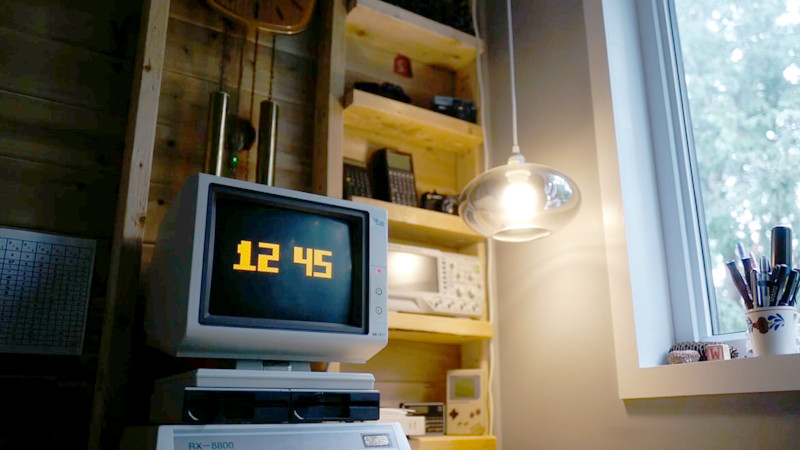Clocks are a favourite project here, and we can say we’ve seen all conceivable types over the years. Just a software clock on a retrocomputer perhaps isn’t the coolest among them, but [Willem van der Jagt ]’s Apple][ clock has a little bit extra. It takes its time reference from a real pendulum, on an antique wall clock.
A proximity sensor next to a metal pendulum gives an easy way to generate a digital pulse on each pass, but leaves the question of how to transfer it to the computer. With computers of this age the circuitry is surprisingly simple, and in this case he’s sending an interrupt to the machine which the software can pick up for its timing. There is a small logic circuit between the sensor and the interrupt allowing him to gate the pendulum line, triggered from one of the output lines exposed on the Apple’s game port.
The code is written in assembly, and counts the number of pendulum swings before incrementing the number of minutes. It’s an enjoyable reminder of the days when the architecture of a computer was this accessible, and for those of us whose past lies in the Sinclair world it’s also been a little peek into something of how the Apple works.
We think this is the first pendulum-driven retrocomputer clock we’ve seen here at Hackaday, as you might understand when a clock has a pendulum it’s usually a more traditional design.















Somehow I’ve hoped that the pendulum would generate the clock signal for the CPU :)
Yes me too! But while it’s probably technically possible, then the CPU speed would be way too slow to update the display every minute :)
Using a pendulum for CPU speed would result in a “millennium” computer that would that long to arrive at the answer of 42.
You could use one to drive a PLL that multiplies the frequency up a few million times.
Exactly right RunnerPack. In fact, you can buy “GPS disciplined oscillators” on ebay. These devices use the one-pulse-per-second output from a GPS module to control a 10 MHz oscillator in a PLL. This creates an extremely accurate and stable 10 MHz source. My “free pendulum clock” uses a digital PLL to create the drive for the analog clock movement. See it on youtube:
https://www.youtube.com/watch?v=bmZBpaL6aHs
This youtube video shows another combination of pendulum and microprocessor. It’s called a “free pendulum clock.”
https://www.youtube.com/watch?v=bmZBpaL6aHs